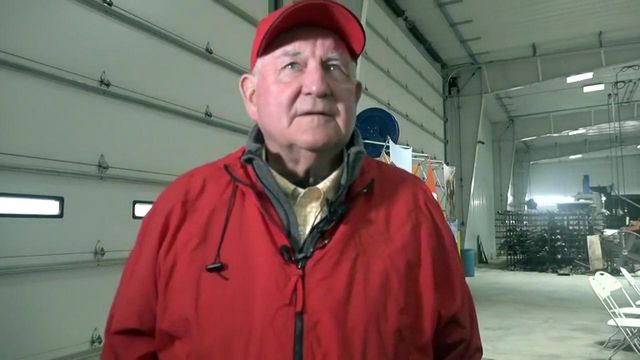USDA announces $16 billion aid program for farmers stung by tariffs
The U.S. Department of Agriculture announced a $16 billion assistance program Thursday for farmers affected by the current trade war with China.
This is the second straight year that the USDA has had to offer aid because of trade disputes with China. Last year, the federal government provided $12 billion.
The current spike in tensions began earlier this month, when President Donald Trump raised tariffs on $200 billion worth of Chinese imports to 25 percent – up from 10 percent – and threatened to impose tariffs on another $300 billion worth of Chinese-made products.
On Monday, China announced that it would respond with a 25 percent tariff on more than 5,000 U.S. products, many of them agricultural products, starting June 1.
The leaders of both countries seem to expect a protracted dispute. The $16 billion aid program announced Thursday is supposed to keep making payments to farmers into early 2020.
This year’s assistance has one significant change from last year. While there is a list of commodities that will qualify for aid, the amount of aid available will be determined by county instead of by crop.
Last year’s program, USDA officials said on a conference call Thursday, inadvertently encouraged farmers to change their planting plans by offering varying assistance rates based on commodity.
This year, all commodities will have the same assistance rate. A lump sum will be determined for each county, based on the number of acres devoted to the eligible crops, and that pot of money will be divided among the county’s farmers.
Most of the money available in the program – $14.5 billion – will be paid directly to farmers using those lump-sum figures.
The payments will be made in three installments, with the first – and largest, the USDA officials said – coming in late July or August.
If no trade deal is reached, a second installment will be paid in November and the third in early 2020, said Bill Northey, undersecretary for farm production and conservation.
“We plan and hope to have a trade agreement long before those second and third payments are made,” Northey said.
Dairy farmers will receive a per-hundredweight payment based on their production history.
Payments to hog producers will be based on inventory during a timeframe that will be specified later.
In addition to the direct payments to farmers, the program includes $1.4 billion that will be used to buy surplus commodities, such as fruits, vegetables, beef, pork, lamb, poultry and milk, which will then be distributed to food banks, schools and other groups serving low-income individuals.
North Carolina is ranked No. 2 in hog production and No. 1 in poultry and egg production.
North Carolina is also the country’s top tobacco producer, with farmers growing about $733 million worth of tobacco each year. Tobacco is not one of the crops eligible for assistance.
No timetable was given for when states and counties will be told how much assistance money is headed their way.
“It is a challenge to deliver a program like this,” Agriculture Secretary Sonny Perdue said. “One of the considerations for both producers and our staff is to make it very easy to use and understand.”
The North Carolina Farm Service Agency, which will administer the program in the state, said it had no additional information on the program Thursday.










